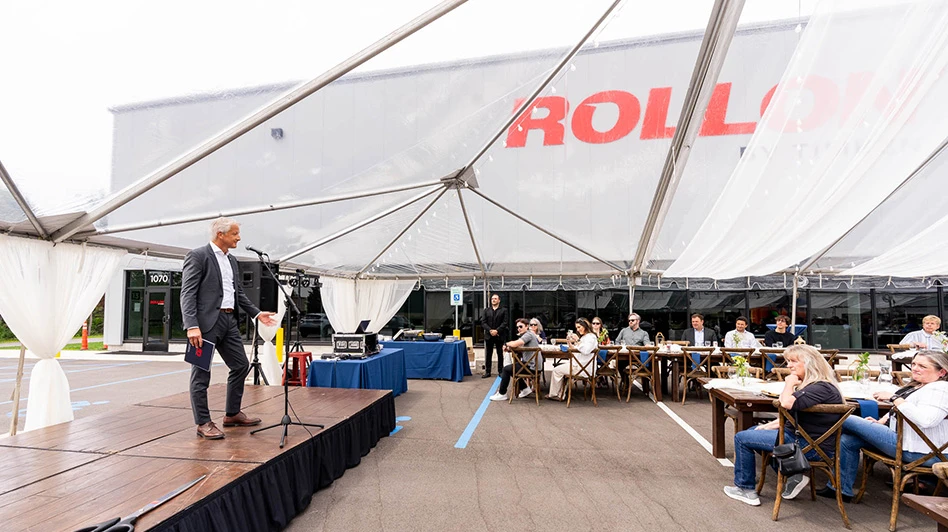
BMG
Originally driven by stringent quality requirements and the need for high levels of repeatability, automation has brought other benefits to medical packaging producers, including facilitating higher and more predictable throughput and addressing the challenges of attracting, training, and retaining a quality manufacturing workforce.
What’s different about medical packaging?
Thermoformed medical packaging is designed to protect items ranging from implantable medical devices to surgical instruments. The selection of materials and the forming and sealing processes ensure the integrity of the sterile barrier system is maintained during shipping and handling until the product is opened.
Packaging must protect products from damage during shipping by securely holding each item in place and separating multiple items packaged together from damaging each other. For sharp objects, such as needles, screws, and drills, the packaging must protect the safety of the people handling the package.
Material selection
Polyethylene terephthalate glycol modified (PETG) and high-impact polystyrene (HIPS) are often selected for medical packaging applications. PETG is created by adding a glycol modifier to PET making it slightly softer for tighter seals and more suitable for withstanding high-temperature sterilization processes. HIPS plastics are impact-resistant and clear and have hygienic qualities.
Strong flange, complex geometries
The entire package must withstand temperature and pressure extremes of the sterilization process. The flange must have the thickness, rigidity, and smooth surface to accept and maintain a hermetic seal to the Tyvek lid, and the sidewalls must have the strength and thickness to prevent cracking and leakage during transport.
The most challenging aspect of medical packaging design is often isolating individual items into separate compartments and locking them in place. When properly designed and manufactured, undercuts allow each part to be snapped into place and held securely.
Elimination of airborne particulates
Most medical packaging applications call for enclosing the thermoforming machinery in a protective enclosure to minimize exposure to airborne particulates that can cause gaps during the hermetic sealing process. It’s imperative to eliminate static that can attract particulates and ensure the cutting process doesn’t generate particulates that can migrate to the product.
Isolating the system from ambient air and temperatures that cause fluctuations in the heating of materials and in the air pressure of pneumatic components is also important.
Increasing automation
The special requirements for medical packaging have led to the wide-scale adoption of form/cut/stack thermoforming systems. Simpler, less costly contact heat systems are suitable for a small fraction of medical packaging applications because they lack plug assist capabilities required for complex geometries and higher clamping forces that form/cut/stack systems offer. Contact heat systems are primarily used for simple package designs and low production volumes.
Form/cut/stack systems are usually enclosed, protecting the process and product from airborne particulates and ambient temperature and humidity. They can be more fully automated and therefore more precisely controlled, especially machines with 100% servo motors and drives.
Investment in automation offers advantages in medical packaging manufacturing. More precision and control results in higher repeatability, which means higher quality products, fewer defects, and less waste. The process improvements achieve faster cycle times and predictable output, for higher throughput and scalability.
Precise control and repeatability are critical to the calibration and production consistency required by standards and government regulations for medical packaging, such as ISO 11607:2019 and Title 21 CFR Part 11. Automation may also include vision systems and other inspection technology that provide automatic, continuous real-time quality control.
Workforce management
Medical packaging manufacturing faces the same workforce challenges as all industries. The operation of earlier generations of thermoforming equipment was often known as more of an art than a science, with operations acquiring a feel for what works after decades of experience. Veterans of the industry are moving on to other roles or retiring, and it’s difficult to transfer these skills to new equipment operators, especially when employee turnover rates are high.
Ease of operation
Automated systems are less labor-intensive because instead of requiring one or more operators per production line, a single operator can cover multiple lines. This requires machines to autonomously perform forming, cutting, and stacking processes with little or no hands-on engagement by the operator. For high volume production, robotics is employed to automatically perform downstream packaging and palletizing functions.
The procedures for changing tooling between SKUs and replacing roll stock also need to minimize human error and effort. The right tooling needs to be installed in exactly the right way for every production run, and roll stock can weigh up to 1,500 lb. Thermoforming equipment should be designed with procedures and tools for streamlining these processes and preventing errors with ergonomic aids for lifting and correctly positioning heavy objects.
Intuitive HMI
The human-machine interface (HMI) must be designed to be easy-to-learn for new employees while also being efficient during production every day. The latest HMI systems employ large high-resolution displays that support multitouch gestures, taking advantage of skills new employees universally bring with their years of smartphone experience. Like smartphone apps, new interfaces should require little training and no paper documentation.
Looking forward
The whole concept of a form/cut/stack thermoforming machine is integrating and automating multiple functions in a single system. Medical packaging manufacturers have been at the forefront of the trend toward automation, initially driven by the need for high quality, repeatability, and traceability. Automation also increases scalability and throughput. The third driver of automation is the need to address labor shortages and high turnover by making processes more productive, less labor-intensive, and easier to learn.
Latest from Today's Medical Developments
- Discover the future of manufacturing at GROB's 5-AXIS LIVE!
- Revolutionizing quality control with Hexagon's Autonomous Metrology Suite
- Autocam Medical's $70 million expansion to boost orthopedic job creation
- Platinum Tooling unveils new product catalog
- Meet the minds shaping CNC grinding at The Precision Summit
- Mitutoyo unveils innovative SurfaceMeasure-S Series sensors
- #69 Manufacturing Matters - Shopfloor Connectivity Roundtable with Renishaw and SMW Autoblok
- Veeva's impact on compliance and efficiency in medtech





